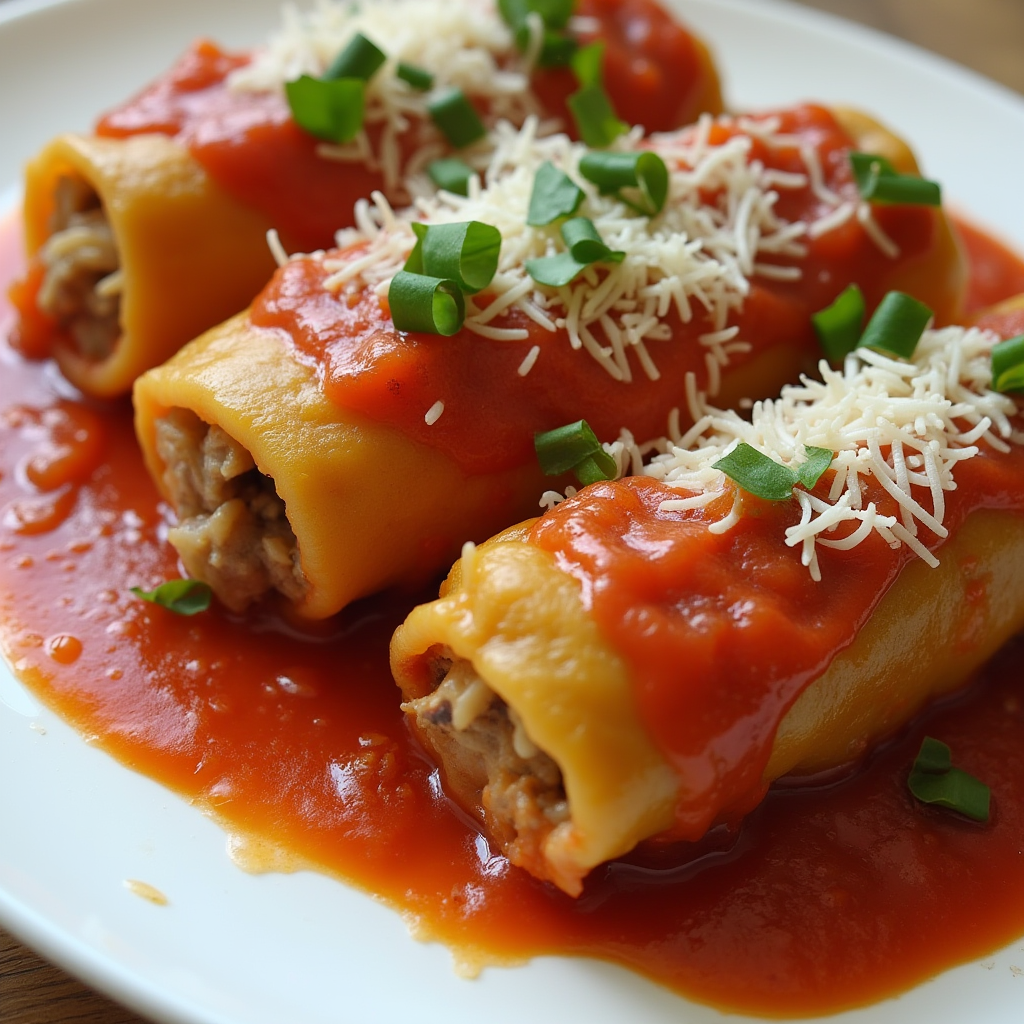Introduction
Russian stuffed cabbage rolls, known as Golubtsy, are a classic in Russian cuisine, providing a comforting and fulfilling meal cherished across generations. These rolls feature a savory mix of meat and rice encased in cabbage leaves, usually cooked in a rich tomato sauce. This article explores the history, preparation, and nutritional aspects of these tasty rolls, offering a comprehensive look at why they remain a favored dish
History and Cultural Significance of Russian Stuffed Cabbage Rolls
The history of Russian stuffed cabbage rolls goes back centuries, showing their strong roots in Eastern European cooking. Initially, they were a practical and affordable dish, made with simple ingredients from local gardens and farms. Over time, Golubtsy changed, taking in flavors from nearby cultures, which improved their taste and variety. Today, they are not just comfort food but also a symbol of Russian hospitality, often served at celebrations and family gatherings .
Key Ingredients for Making Russian Stuffed Cabbage Rolls

To make authentic Russian stuffed cabbage rolls, certain essential ingredients are needed. First, the cabbage, with leaves that are flexible yet strong enough to contain the filling without tearing. The filling’s hearty base usually consists of ground meat, often a mix of pork and beef. Long-grain rice, onions, and garlic add texture and enhance the flavor. Finally, a tangy tomato sauce covers the rolls, adding moisture and a sharp acidity that balances the meat’s richness. Together.
Traditional Techniques for Preparing Russian Stuffed Cabbage Rolls
The process begins with softening the cabbage leaves, which involves either boiling them until they are flexible or freezing them to break down the fibers. The filling is then prepared by sautéing onions, mixing them with cooked rice, raw meat, and spices. Each leaf is carefully filled and rolled to ensure it doesn’t unravel during cooking. Finally, the rolls are placed in a pot, covered in tomato sauce, and simmered until everything is thoroughly cooked and the flavors meld.
Nutritional Benefits of Russian Stuffed Cabbage Rolls
Beyond their tasty flavor, Russian stuffed cabbage rolls are packed with nutritional benefits. They offer a good balance of proteins and carbohydrates, important for energy and muscle repair. Cabbage, a type of vegetable rich in vitamins C and K, fiber, and antioxidants, helps boost the immune system and supports digestion. The tomato sauce also provides lycopene, an antioxidant known for enhancing heart health. This makes Golubtsy not just a filling meal but also a healthy choice that contributes
Step-by-Step Recipe for Classic Russian Stuffed Cabbage Rolls

Making Russian stuffed cabbage rolls requires careful attention and patience, but the tasty result is well worth the effort. First, gather all the necessary ingredients: cabbage, ground pork and beef, rice, onion, garlic, and tomato sauce. Start by boiling the whole head of cabbage until the leaves are soft and can be easily peeled off. Next, cook the rice and sauté the onions and garlic until golden. Mix these with the raw meat and season well. Place a spoonful of the filling in the center of each cabbage leaf, fold in the sides, and roll tightly. Arrange the rolls in a pot, cover with tomato sauce, and let them simmer for about an hour. Serve hot, ideally with a dollop of sour cream.
Popular Occasions for Enjoying Russian Stuffed Cabbage Rolls
Russian stuffed cabbage rolls are adaptable and fit well into various dining situations, making them suitable for many occasions. They are especially popular during holidays such as New Year’s and Easter, often featured in festive meals. Golubtsy also shine at family gatherings and Sunday dinners as a filling main dish that pleases everyone. In Russia, these rolls are a common choice for potlucks and community events because they’re easy to share and widely loved, adding a special touch .
How Russian Stuffed Cabbage Rolls Compare to Other Global Varieties

Russian stuffed cabbage rolls, or Golubtsy, are similar to stuffed cabbage from other places but also have unique features. For instance, Polish Golabki and Romanian Sarmale often use smoked meat, which changes the flavor. In the Middle East, dishes like Lebanese Malfouf are seasoned with mint and lemon, giving them a lighter, fresher taste. This comparison shows the variety in this simple dish and highlights how local ingredients and flavors can make a basic recipe.
FAQs
What is the difference between Polish and Ukrainian cabbage rolls?
Polish cabbage rolls, called golabki, usually have a filling of ground meat, rice, onions, and mushrooms, seasoned with spices like marjoram and black pepper. On the other hand, Ukrainian cabbage rolls, known as holubtsi, often add a bit of pork fat for richness and might use buckwheat along with or instead of rice. Moreover, Ukrainian versions sometimes have a tangier tomato sauce, which stands out against the milder Polish sauce.
Which type of cabbage is best for cabbage rolls?
For making cabbage rolls, Savoy cabbage is often the top pick because of its texture and taste. Its crinkled leaves are more flexible than other types, making them easier to wrap around the filling without ripping. Also, Savoy cabbage’s leaves are strong enough to survive cooking, keeping the rolls together, and its mildly sweet flavor goes well with the savory fillings typically used in cabbage rolls.
Why do you freeze cabbage before making cabbage rolls?
You freeze cabbage before making cabbage rolls to soften the leaves, making them easier to roll without boiling. Freezing helps break down the cabbage leaves, making them more bendable. Once thawed, the leaves wrap around the filling easily without breaking or tearing, making the prep simpler and keeping in the nutrients that boiling often removes.
What is the difference between halupki ?
Halupki and golabki are different names for the same dish, which is the Polish version of stuffed cabbage rolls. The name halupki is used in areas of Central and Eastern Europe influenced by Slovak and Hungarian cultures, while golabki is the term used in Poland. Both involve cabbage leaves filled with a mix of meat and grains, usually rice, cooked in a tomato sauce.
Conclusion
Throughout this article, we’ve explored the rich story that Russian stuffed cabbage rolls add to culinary tradition, from their deep history to their cultural importance and health benefits. We’ve also given a detailed guide on how to make them and shown how they compare globally. Whether for a special event or a cozy family meal, Golubtsy remains a cherished dish, loved for its tasty flavors and the warmth it adds to every meal it’s part of. This look into the dish not only deepens our enjoyment of it but also encourages us to include it in our own cooking.

